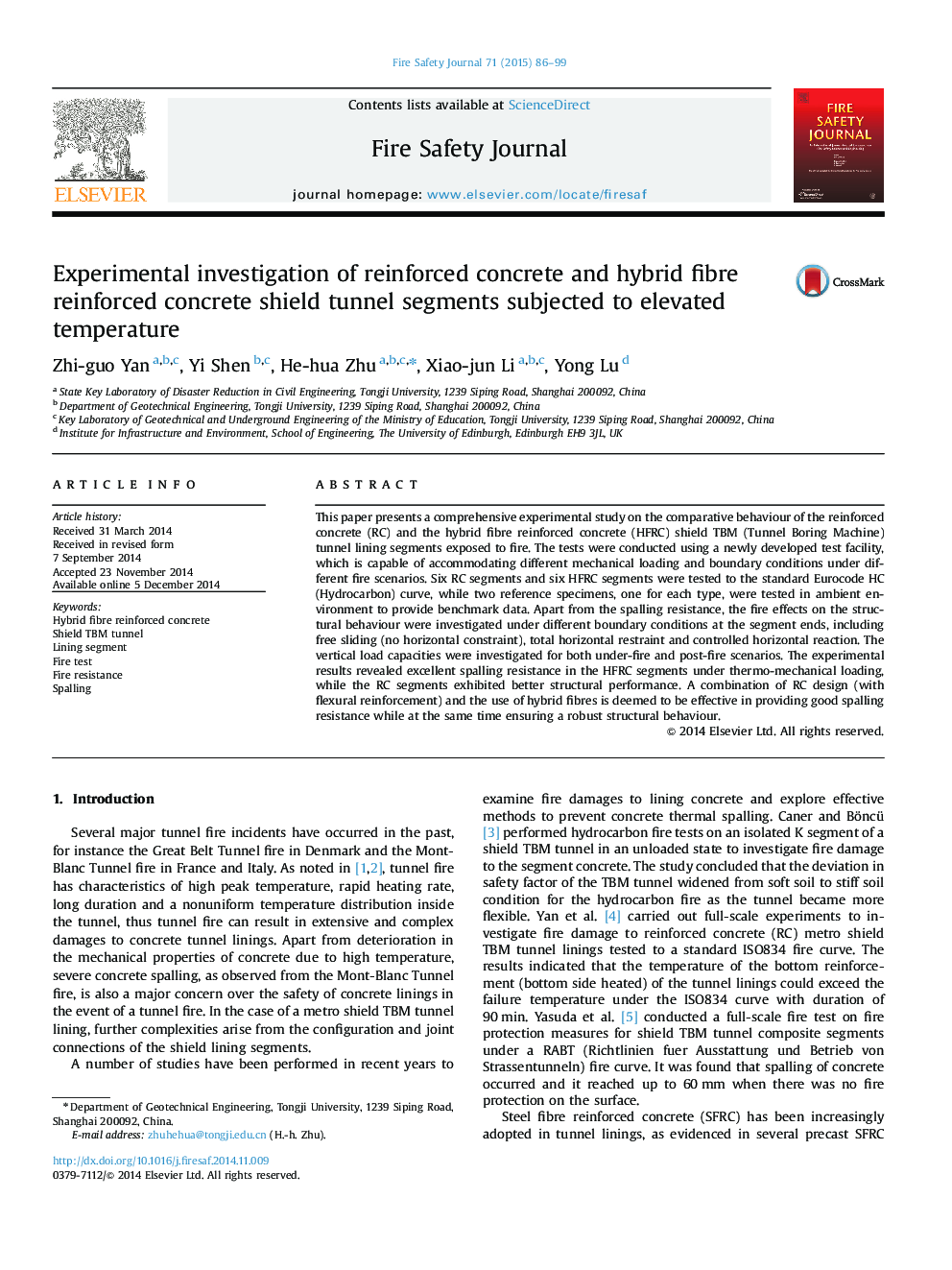| Article ID | Journal | Published Year | Pages | File Type |
|---|---|---|---|---|
| 269786 | Fire Safety Journal | 2015 | 14 Pages |
•New test facility on shield TBM tunnel linings at elevated temperatures was developed.•RC and HFRC shield TBM tunnel segments were tested under a HC fire load.•Excellent spalling resistance in the HFRC segments under thermo-mechanical loading.•Combination of RC and HFRC design will enable robust fire performance in lining segments.•Effects of boundary conditions at the supports on segments in fire are investigated.
This paper presents a comprehensive experimental study on the comparative behaviour of the reinforced concrete (RC) and the hybrid fibre reinforced concrete (HFRC) shield TBM (Tunnel Boring Machine) tunnel lining segments exposed to fire. The tests were conducted using a newly developed test facility, which is capable of accommodating different mechanical loading and boundary conditions under different fire scenarios. Six RC segments and six HFRC segments were tested to the standard Eurocode HC (Hydrocarbon) curve, while two reference specimens, one for each type, were tested in ambient environment to provide benchmark data. Apart from the spalling resistance, the fire effects on the structural behaviour were investigated under different boundary conditions at the segment ends, including free sliding (no horizontal constraint), total horizontal restraint and controlled horizontal reaction. The vertical load capacities were investigated for both under-fire and post-fire scenarios. The experimental results revealed excellent spalling resistance in the HFRC segments under thermo-mechanical loading, while the RC segments exhibited better structural performance. A combination of RC design (with flexural reinforcement) and the use of hybrid fibres is deemed to be effective in providing good spalling resistance while at the same time ensuring a robust structural behaviour.
